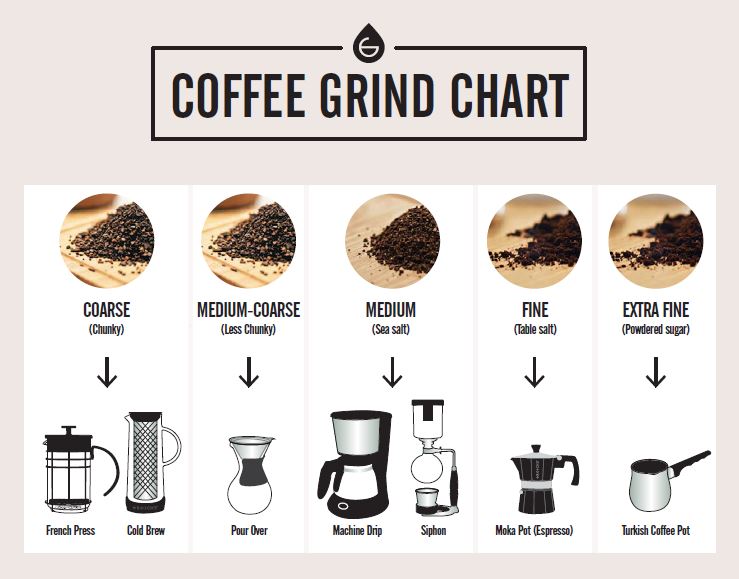What Grind is Best for Home Espressos?
When I first started brewing espresso at home, I quickly realized that the grind size plays a crucial role in crafting the perfect shot. It’s not just about the quality of the beans or the machine itself—getting the grind just right can be the difference between an excellent espresso and a sour or bitter disappointment. After a lot of experimentation, I’ve gathered some tips to help you find the ideal grind for home espresso brewing.
Espresso, known for its rich and full-bodied flavor, requires the right balance of elements to shine: the beans, the machine, water temperature, pressure, and, most importantly, the grind size. If the grind is too fine or too coarse, it can throw off the entire brewing process. Here's what I’ve learned about finding the best grind for making great espresso at home.
Why Grind Size is Crucial for Espresso
The grind size directly impacts how water extracts flavor from coffee grounds. In espresso, water is forced through the grounds at high pressure, so the grind needs to be fine enough to extract the rich, concentrated flavors in a short amount of time. If the grind is too coarse, the water flows too quickly, resulting in under-extracted espresso with sour, weak flavors. On the other hand, if the grind is too fine, the water struggles to pass through, leading to over-extraction and a bitter, unpleasant shot.
Ideal Espresso Grind Size
The perfect grind for espresso should feel like fine sand—somewhere between table salt and flour. It shouldn’t be as powdery as flour, but it needs to be fine enough to allow for a good extraction under pressure. To check, you can rub the grounds between your fingers; they should be fine but still have a slight texture.
Tip: A burr grinder is your best option for achieving consistent espresso grinds. Burr grinders produce a uniform particle size, which is essential for even extraction. Blade grinders, on the other hand, often create uneven grinds, leading to an inconsistent espresso shot.

Adjusting the Grind for Your Machine
Not all espresso machines are the same, so you may need to adjust the grind size depending on your machine’s quirks. Here’s a simple guideline: If your espresso brews too quickly (in less than 20 seconds), your grind is likely too coarse. If it takes longer than 30 seconds, the grind might be too fine.
I aim for a brew time of 25-30 seconds for my espresso shots, which I’ve found to be the sweet spot for balanced flavor. Every time I change coffee beans, I adjust the grind slightly, as different beans can require small tweaks to get the perfect extraction.
Ensuring Consistency
Consistency is key when brewing espresso. Here’s how I maintain consistency in my shots:
- Fresh Beans: Freshness is everything in espresso. I try to use beans within two weeks of roasting to ensure maximum flavor and crema. Freshly ground beans make a world of difference in the final cup.
- Tamping: Even, consistent tamping is essential. I tamp with enough pressure to compact the coffee grounds, but not so much that water struggles to flow through. Uneven tamping can cause channeling, where water finds paths of least resistance, resulting in under-extraction.
- Measuring: I always weigh my coffee and espresso yield to maintain consistency. I use around 18-20 grams of coffee for a double shot and adjust my grind and dose as needed for each brew.
Experimenting with Different Grinds
While espresso traditionally requires a fine grind, it’s worth experimenting with slight variations depending on your taste preferences and the beans you're using. Here’s what I’ve discovered through my own experimentation:
- Finer Grinds: Finer grinds tend to create more body and bitterness, which works well with darker roasts, bringing out rich, chocolatey flavors.
- Coarser Grinds: A slightly coarser grind can bring out more acidity and sweetness, which is ideal for lighter roasts with fruity or floral notes.
Common Mistakes to Avoid
Here are a few mistakes I learned to avoid over time:
- Grinding too far in advance: Once ground, coffee beans start losing their freshness and flavor quickly. I only grind as much as I need right before brewing.
- Neglecting grinder maintenance: I regularly clean my grinder to prevent old coffee grounds or oils from affecting the flavor of my espresso. Burr grinders need regular maintenance to maintain consistency.
- Ignoring roast dates: I always check the roast date when purchasing beans. Coffee is at its peak flavor within 1-2 weeks of roasting, and using older beans can result in flat, dull espresso.

Final Thoughts: Practice Makes Perfect
Dialing in the perfect espresso grind takes time and patience, but the effort is worth it. Once you get the grind size just right, everything else—flavor, texture, crema—falls into place. Don’t be afraid to adjust and experiment with each new batch of beans. Over time, you’ll develop an instinct for the grind size that works best with your machine and beans.
Now, after countless trial runs, I can confidently pull a shot of espresso at home that rivals my favorite cafés. For anyone just starting this journey, my advice is to be patient, embrace the learning process, and enjoy experimenting with your equipment and beans. Once you find the sweet spot, the satisfaction of brewing a perfect shot of espresso at home is unbeatable.
With the right grind, equipment, and a bit of practice, you’ll be on your way to making café-quality espresso right in your kitchen!
